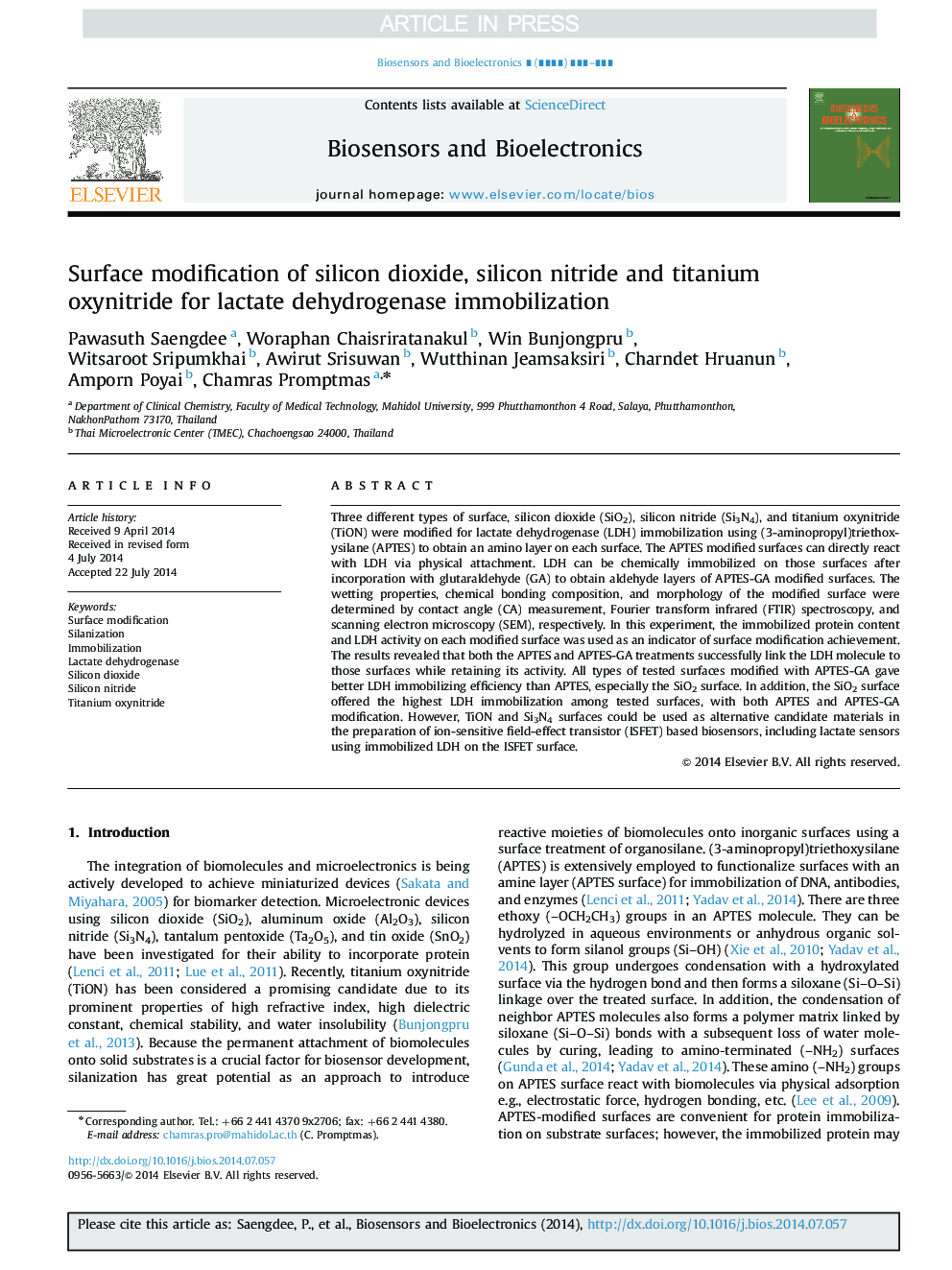| Article ID | Journal | Published Year | Pages | File Type |
|---|---|---|---|---|
| 7232421 | Biosensors and Bioelectronics | 2015 | 5 Pages |
Abstract
Three different types of surface, silicon dioxide (SiO2), silicon nitride (Si3N4), and titanium oxynitride (TiON) were modified for lactate dehydrogenase (LDH) immobilization using (3-aminopropyl)triethoxysilane (APTES) to obtain an amino layer on each surface. The APTES modified surfaces can directly react with LDH via physical attachment. LDH can be chemically immobilized on those surfaces after incorporation with glutaraldehyde (GA) to obtain aldehyde layers of APTES-GA modified surfaces. The wetting properties, chemical bonding composition, and morphology of the modified surface were determined by contact angle (CA) measurement, Fourier transform infrared (FTIR) spectroscopy, and scanning electron microscopy (SEM), respectively. In this experiment, the immobilized protein content and LDH activity on each modified surface was used as an indicator of surface modification achievement. The results revealed that both the APTES and APTES-GA treatments successfully link the LDH molecule to those surfaces while retaining its activity. All types of tested surfaces modified with APTES-GA gave better LDH immobilizing efficiency than APTES, especially the SiO2 surface. In addition, the SiO2 surface offered the highest LDH immobilization among tested surfaces, with both APTES and APTES-GA modification. However, TiON and Si3N4 surfaces could be used as alternative candidate materials in the preparation of ion-sensitive field-effect transistor (ISFET) based biosensors, including lactate sensors using immobilized LDH on the ISFET surface.
Keywords
Related Topics
Physical Sciences and Engineering
Chemistry
Analytical Chemistry
Authors
Pawasuth Saengdee, Woraphan Chaisriratanakul, Win Bunjongpru, Witsaroot Sripumkhai, Awirut Srisuwan, Wutthinan Jeamsaksiri, Charndet Hruanun, Amporn Poyai, Chamras Promptmas,
